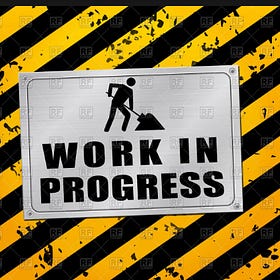Motivation Dies, Momentum Doesn't | Break the Cycle
Immortal Motivation | The Momentum Mindset
We love new beginnings.
You join the gym, write the first page of your book, or finally start that side hustle. The first step feels exciting. The next few feel heavy. By the second week, you’re already dragging your feet.
Here’s the truth: Success isn’t about massive effort—it’s about Momentum.
Momentum is like a snowball. Once it’s rolling, it grows. But the hardest part is getting it moving.
Anyone can start. Few can sustain. That’s the gap between wishful thinking and real results.
Most goals don’t fail because they’re too big. They fail because we lose momentum too soon.
The Psychology of Momentum
The Win Wiring Effect
Every time you complete a small task, your brain rewards you with a feel-good chemical—the fuel of anticipation. This reward system wires you to want to keep going. But if you aim too high too soon (like 100 pushups on day one), your brain interprets failure as pain—killing momentum.
Lesson: Small wins > Big promises.
The Zeigarnik Effect
Your brain hates unfinished tasks. Psychologist Bluma Zeigarnik discovered that we remember incomplete tasks better than completed ones. That’s why starting—even a tiny step—creates a “mental itch” that pulls you back to finish.
Lesson: Don’t wait for motivation. Just start with the smallest step to activate the “itch.
You Don’t Need Motivation | You Need a System
If motivation worked, we’d all be morning joggers with clean inboxes, six-packs, and perfectly timed gratitude journaling habits.
The Power of Identity
When you repeat an action, your brain starts tying it to your identity.
Write daily → “I’m a writer.”
Share your thoughts online → “I’m a creator.”
Identity fuels momentum because quitting doesn’t just mean skipping a task—it means betraying who you are becoming.
Lesson: Focus on “who you’re becoming,” not just “what you’re doing.”
Practical Ways to Stay in Motion
Embrace the Restart Rule
Momentum doesn’t die when you miss a day. It dies when you quit because you missed a day.
Psychologists call this the “what-the-hell effect.” The cure? Restart the very next day—without guilt.
Leverage the Environment
Your surroundings either fuel or drain momentum.
Keep workout clothes visible.
Place your book/journal on your pillow.
Delete distractions from your phone.
When the path is frictionless, momentum flows naturally.
Track Visible Progress
Humans crave visible wins. Use a habit tracker, a calendar chain, or even sticky notes. Watching progress pile up turns consistency into a game you don’t want to lose.
Tiny starts bypass resistance—and once you start, you usually do more.
Build Momentum Loops
Stack tasks that feed each other. Example:
Workout → better energy → easier to eat healthy → clearer focus → better work output.
Each action fuels the next, creating a self-reinforcing loop.
Anchor It to a Trigger
Habits stick when tied to something automatic.
After brushing teeth → do 10 pushups.
After morning coffee → write one paragraph.
After shutting down work → plan tomorrow’s top task.
This “if-then” wiring makes momentum automatic.
Final Thought
Momentum isn’t magic—it’s mechanics.
You don’t need to be hyper-disciplined or superhuman. You just need to:
Start small.
Stack wins.
Protect your rhythm.
Because once momentum takes over, it feels less like forcing yourself—and more like being carried forward.
Start today. Shrink the starting line. Build the snowball. And let momentum do the heavy lifting.



“Momentum doesn’t die when you miss a day. It dies when you quit because you missed a day.”
Such a powerful mindset shift. Loved this piece!
Madam this right here is genius!! As a massive procrastinator, what a fun read!! I will attempt to implement as much of this as possible and I thank you for the knowledge!